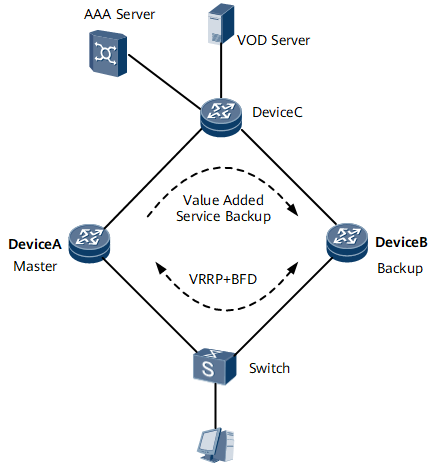User Access Dual-device Hot Backup Configured Together with Value-Added Services
Carriers can divide networks accessed by users into different subnets based on destination addresses to meet service requirements. When different end users access the subnets, different rate limiting and accounting are performed for the users. DAA and EDSG services can implement independent rate limiting and accounting based on subnets, and BOD services can dynamically adjust bandwidth for online users. As applications accessed by users become diversified, high reliability is required for value-added services. To meet this requirement, deploy dual-device hot backup so that the value-added service is smoothly switched to the backup device if the master device fails. Dual-device hot backup ensures normal traffic accounting without the need of users' re-dialup.
As shown in Figure 1, the end user goes online from Device A (master device ) through PPPoE dialup. Device A and Device B implement RUI over VRRP and BFD. Device A backs up EDSG services to Device B (backup device). If Device A fails, service traffic is switched to Device B. Traffic statistics on Device A and Device B remain consistent.
